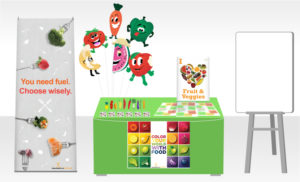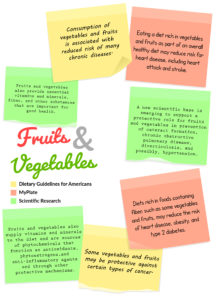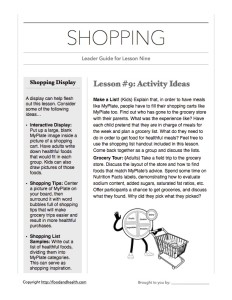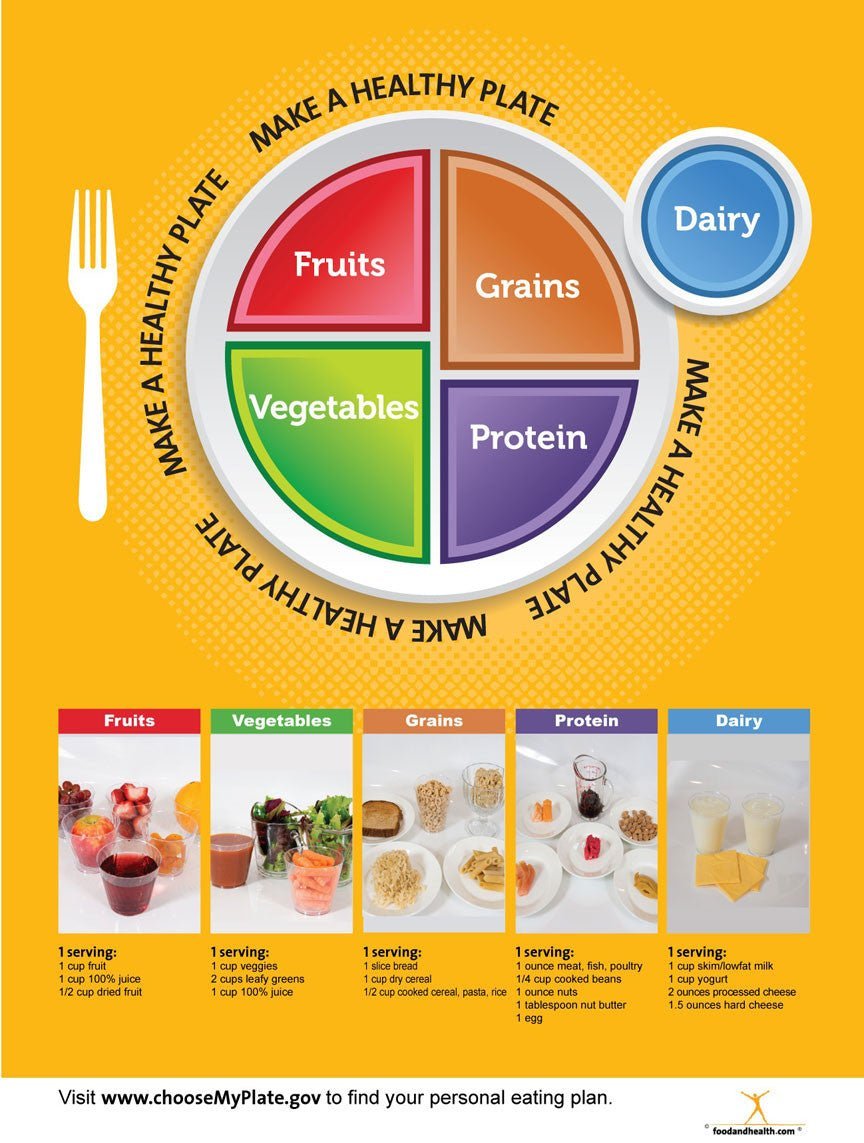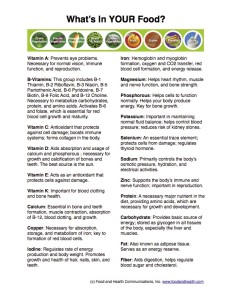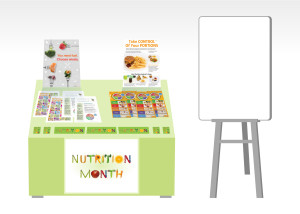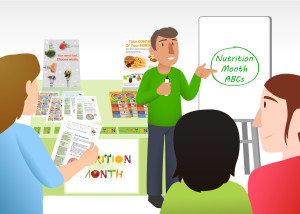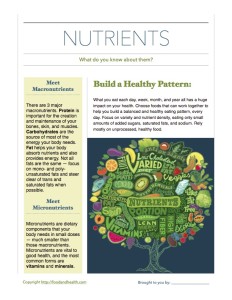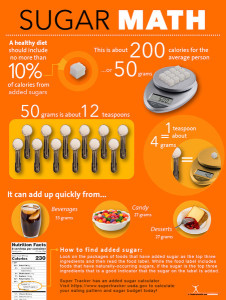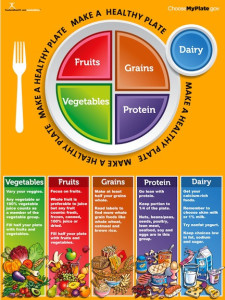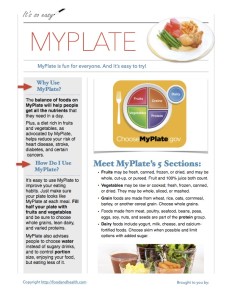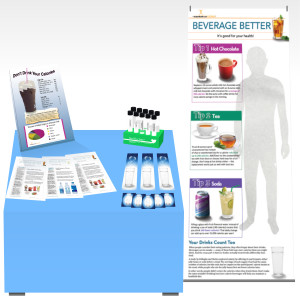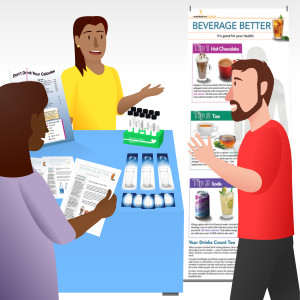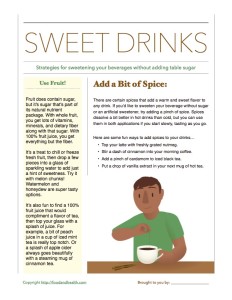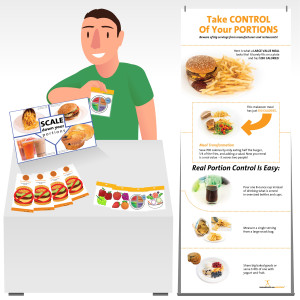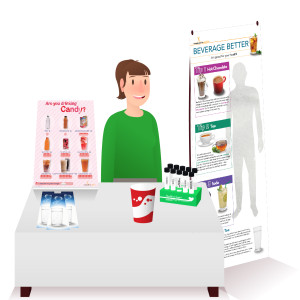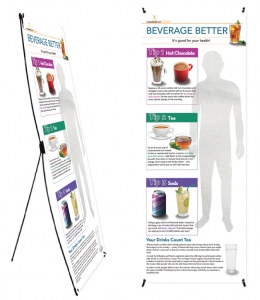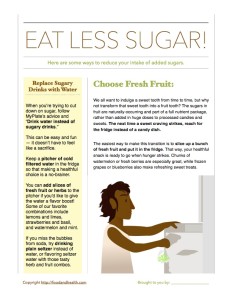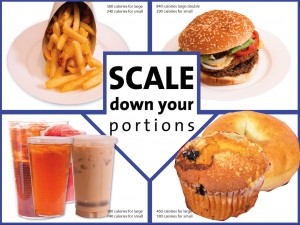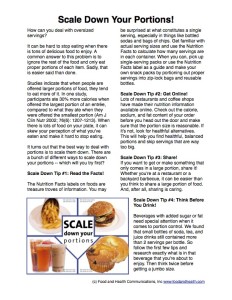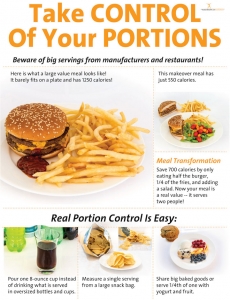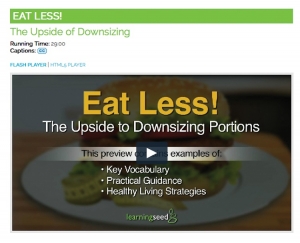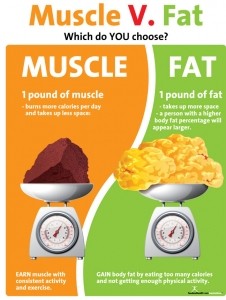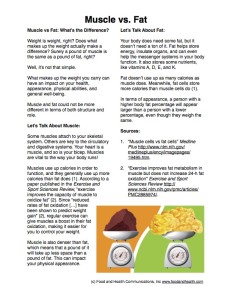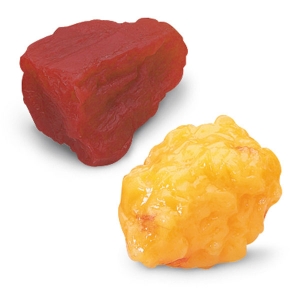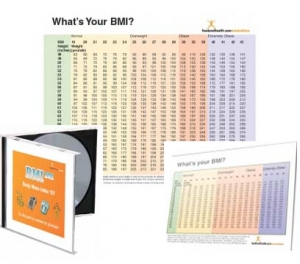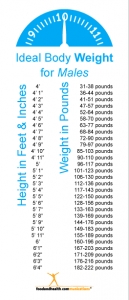June is Fresh Fruit and Vegetable Month, so what better time is there to celebrate the joys of a variety of fresh fruits and vegetables? This month’s display will help you do just that, without having to burn the midnight oil.
The Materials:
- Banner and Stand: You Need Fuel: Choose Wisely
- Brainstorming Space: An easel with a whiteboard, blank poster board, or giant notepad on it, along with some writing utensils
- On Your Table: I Heart Fruits and Vegetables Poster on a Tabletop Easel arranged behind some free Fruit and Vegetable Handouts.
- Prizes: Fruit and Vegetable Pens and Fruit and Vegetable Stickers
- Behind Your Table: Fruit and Vegetable Balloons
- In Front of Your Table: Color Your World with Food Banner
The Activities:
- Game: Name That Fruit or Vegetable
- Brainstorming Session: Incorporating Variety into Your Meals
The Details:
To set up your space, first arrange your table with the Color Your World with Food Banner hanging along the front. Flanking it to one side, add the You Need Fuel: Choose Wisely Banner and Stand. To balance it, set up your brainstorming space on the other side of the table. Arrange the Fruit and Vegetable Balloons behind the table. Now top the table with the I Heart Fruits and Vegetables Poster on a Tabletop Easel and arrange some of the Fruit and Vegetable Handouts out in front of it. Line up your prizes (Fruit and Vegetable Pens and Fruit and Vegetable Stickers) at the front of your table, then take a step back and evaluate. How does the display look? Make any necessary shifts, then get ready for your activities.
For the Name That Fruit or Vegetable Game assemble a collection of facts and trivia about common fruits and vegetables. Food and Health’s blog has a few pages of great resources for this game, and the Name That Fruit and Veggie PowerPoint Slideshow is full of fruit and veggie facts as well. Consider the following examples as inspiration for your own collection.
- This guitar-shaped squash is rich in alpha carotene, which has been linked to a reduced risk of heart disease and cancer (butternut).
- These tart citrus fruits contain limonin, a cancer-fighting compound that is good for your health (lemons).
- These starchy veggies are fat-free sources of vitamin E (yams).
- This tree-like veggie is part of the cabbage family (broccoli).
Once you’ve assembled your facts and trivia (note: this should be before the fair), collect a group of people at your booth to compete for the prizes you’ve displayed. Present each fun fact and let people guess what fruit or vegetable matches it. Offer correct answers and prizes as you go, or have people track their successes and declare a winner at the end of the game.
After the game, turn to brainstorming. Grab your marker and a spot within reach of the brainstorming space, then ask people to discuss the fruits and vegetables they commonly eat. Do they get enough? Review the recommendations set forward by MyPlate and the Dietary Guidelines for Americans, then return to the main topic. How can people incorporate more fruits and vegetables into their meals? How can they build up the variety of fruits and veggies they eat in a week? Offer the remaining prizes for participation, handing them out as volunteers call out suggestions.
Additional Resources:
There are lots of other fruit and vegetable resources that would be perfect for this display, or for another Fresh Fruit and Vegetable Month activity. Why not try…
- Fruit and Vegetable Wellness Challenge
- Freedom from Chronic Disease Poster
- Fruit and Vegetable Activity Set for Kids
- Rainbow Salad Floor Sticker
- Fruit Bulletin Board Kit
- Fruit or Vegetable Photo Posters
And for more inspiration, check out the previous editions of the Display of the Month series…
Here’s the free printable Fruit and Vegetable Handout for your display!
And finally, last but not least, here are some essentials for your Fresh Fruit and Vegetable Month celebration…




